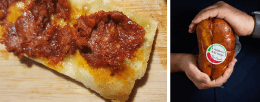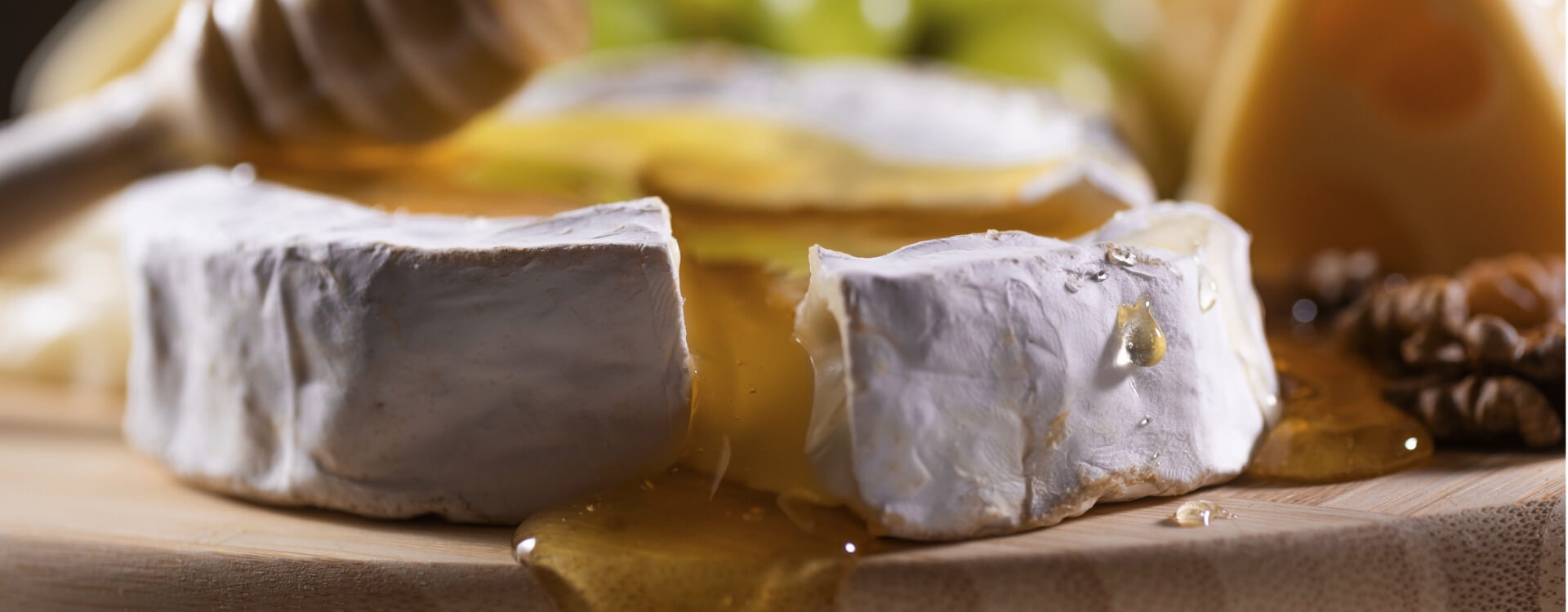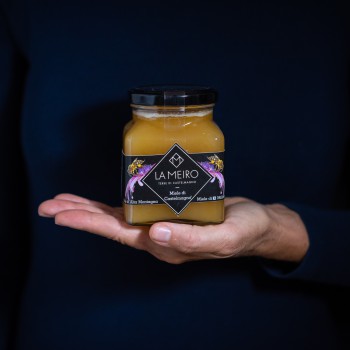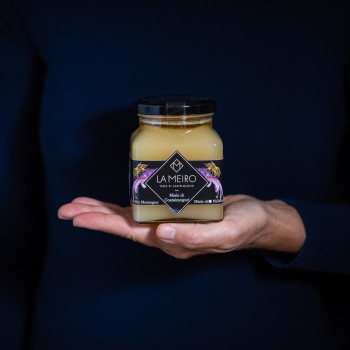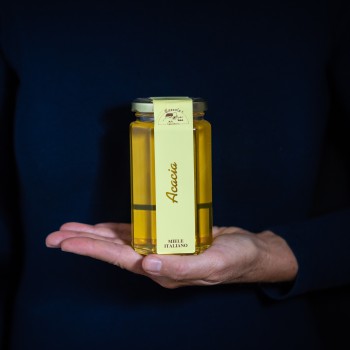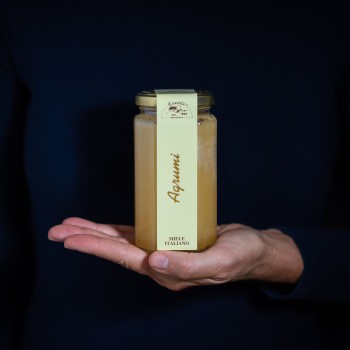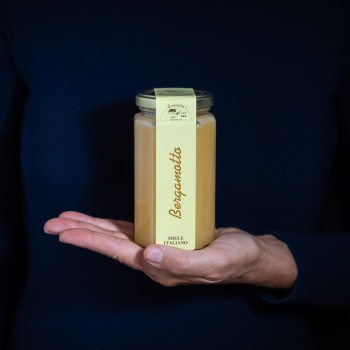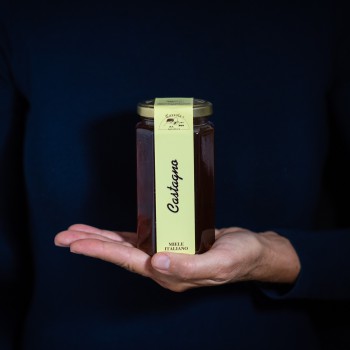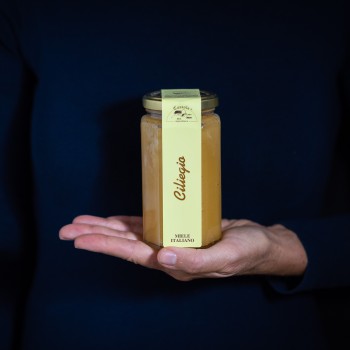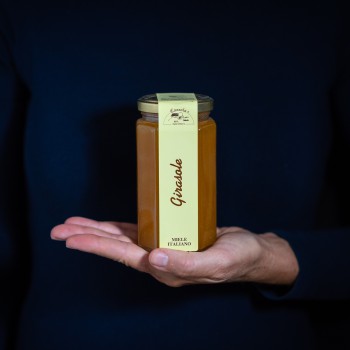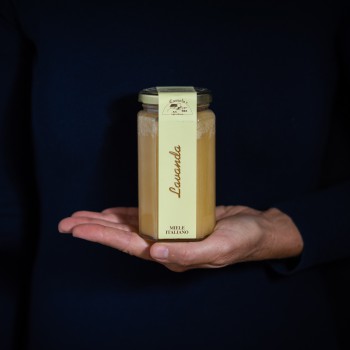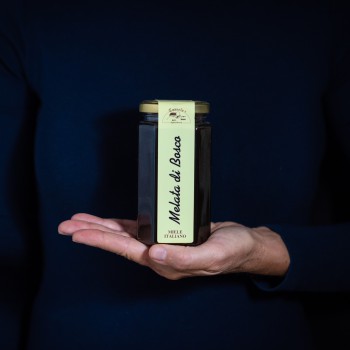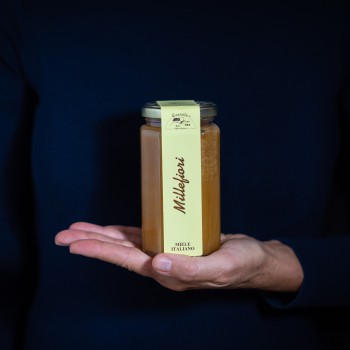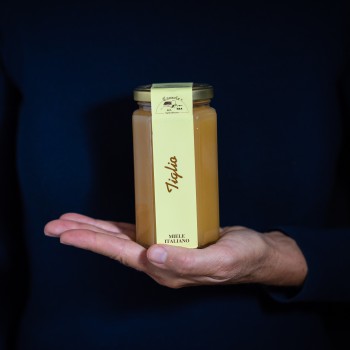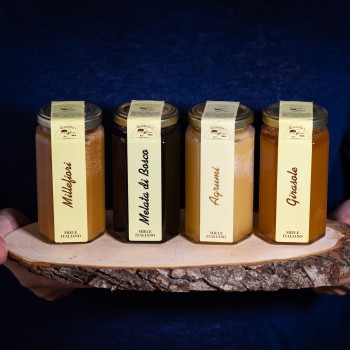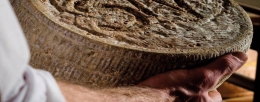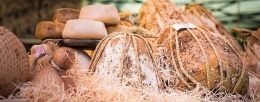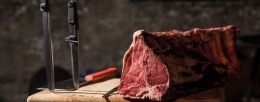Ferragosto is approaching, whip out the picnic baskets! What are we taking? All quick preparations to make and practical to carry and eat - dishes and cutlery are hardly needed! The secret? The best Italian cured meats.
Italian honey and cheeses: tasty pairings
How delicious is the combo cheese and honey? Yes, cheese platters are very trendy right now and we often stumble upon quite random pairings but, when it’s well thought through, the honey-cheese combo can be a true delicacy.
Careful now, we are talking about honey types and cheeses in the plural. There are almost 500 different types of cheeses in Italy - all of them incredible. We have so many cheeses with protected designation of origin (PDO, PGI and PAT) that we can call ourselves the nation of cheese excellences, with all due respect to France. What about Italian honey? There are at least 50 types of honey and we hold the world record for the biggest variety of monofloral honeys. Often times we treat honey as a side dish to cheese, which we think is the main protagonist, but that’s not right: in order to obtain a truly balanced pairing, the two ingredients must be equally important.
There is single flower or multifloral honey, light or dark, liquid or crystallised, harvested on plains, hills or mountains. Honeydew is not even made from nectar, but it is taken from tree leaves.
Moreover, there are endless flavours: from the most delicate to the strongest ones and sweet is not always the prevailing taste. Strawberry tree honey and chestnut honey are definitely bitterer.
We don’t even have to mention the great cheese variety; just think of how different a Burrata and a Caciocavallo cheese are, or Stracchino and Pecorino sardo, or even Mascarpone and Taleggio cheese.
Excellent Italian honey
What matters is the quality of honey. Let’s start by talking about Italian honey. Generally speaking, given the incredible variety at our disposal, we should always buy Italian honey. The “Made in Italy” label is a seal of guarantee and this is all the more true for honey.
In Italy, unlike in many other countries, cultivation of GMOs is banned. But that’s not all; our country also has one of the strictest laws on the use of contaminants in agriculture (and rightly so). The use of medication is strictly forbidden in beekeeping.
The best honeys do not undergo pasteurisation which actually only helps keeping the product in liquid form and destroys many nutrients found in honey. Crystallisation, or granulation, is a natural process, but it is prevented in industrial honey for aesthetic reasons.
Virgin or raw honey is the only one that does not undergo heat treatments and is hence the most natural one with the most nutrients. Let’s be honest, honey is perfect the way it is; it doesn’t need to be “processed”, anyway.
How to pair honey and cheese?
There is a great variety of Italian honey and an equally great variety of cheeses. We wouldn’t suggest pairing them randomly, as the results could be very disappointing. So how do you pair honey with cheese? There are two schools of thought: concordance or contrast. Sounds familiar? That’s because the very same principles are applied to wine pairing, too.
Pairing by concordance means selecting products with similar features. Cheeses that are rather mild, such as young cow’s milk cheese, pair well with an equally sweet and light honey, whereas structured and aromatic cheeses, such as aged cheeses, go well with a more intense and robust honey.
Pairing by contrast means choosing honey and cheese with contrasting characteristics, which create balance. Following this principle, cheeses high in fat should be paired with slightly sour honey which cleanses the palate, and you can serve particularly sapid cheeses, such as Caciocavallo cheese, with bitter honey contrasting its flavour.
What’s the best rule for the perfect pairing? It’s all a matter of balance, but the ideal combination should not be tiring, it should cleanse the palate and leave it ready for another bite. The two elements must be complementary and should not cover one another. That’s all that matters to me.
Acacia honey and PDO Pecorino Romano cheese
Acacia honey is very sweet and does not fully crystallise, since it is very high in fructose. It does not have sour notes and is the lightest and most delicate honey. However, Pecorino romano cheese is aromatic, intense and with a very hearty flavour. The two could be paired by contrast: they have opposite characteristics, but together they create a unique harmony. See it for yourself.
Citrus fruit honey and PDO Caciocavallo Silano cheese
Citrus fruit honey is the most scented one; it has a sweet flavour with a slightly sour hint and fresh, floral and fruity notes. PDO Caciocavallo silano cheese is sapid and with a melt-in-mouth texture; if it has been aged, it is also slightly spicy. Another case of pairing by contrast; the sour honey creates a pleasant contrast with the well-rounded flavour of cheese.
Lavender honey and PDO Montasio cheese
Lavender honey has a unique, persistent and intense flavour which is fruity but not overpowering; you can taste floral scents and aromas. Montasio cheese - especially when it’s aged - is very flavourful, robust and sapid. In this case, the two elements are paired by concordance, since they both have distinct and rather persistent flavours.
Linden honey and PDO Castelmagno cheese
Linden honey has a complex flavour and a rather high intensity. You can taste the fresh, almost minty, flavour straight away, as well as a balsamic aftertaste. It is very persistent - a rather robust honey, to sum it up. We, hence, need to pair it with an equally persistent and aromatic cheese; the ideal one would be PDO Castelmagno d’alpeggio cheese which is aromatic and very sapid.
Sunflower honey and PDO Taleggio cheese
Sunflower honey has a sweet and fruity flavour; it is quite delicate, but it has a very intense scent. Taleggio cheese has a soft consistency and a melt-in-mouth texture, but it has an intense and robust taste. It also is quite persistent with a complex aftertaste with scents of undergrowth. Here we have a pairing by concordance, since the two elements are equally intense.
One final suggestion if you’re tasting or simply eating a cheese platter: always start from the lightest flavours and add intensity little by little; particularly robust flavours can cover the flavour of other cheeses. Keep on experimenting with new pairings of Italian honey and cheeses: the pairing opportunities are endless.























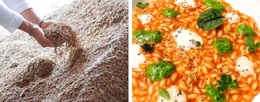
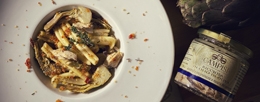

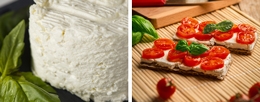
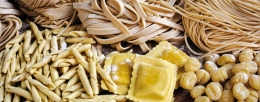
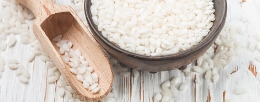
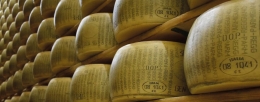
.jpg)
